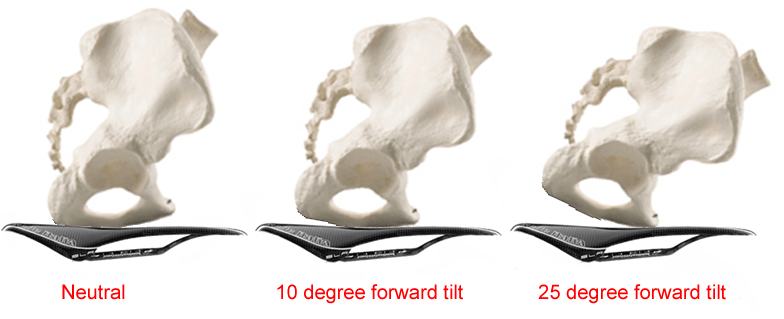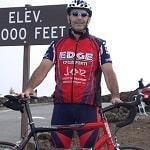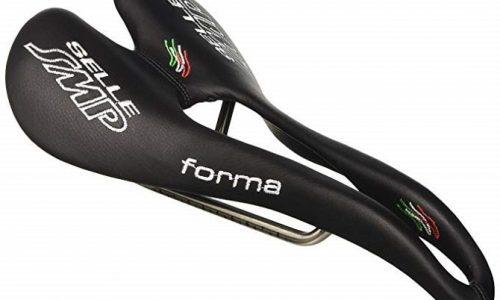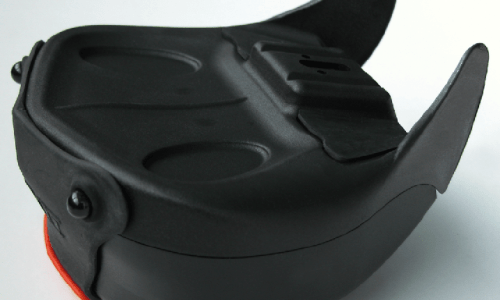PURPOSE OF TEST
Before getting into the actual analysis, testing and recommendations, I would like to preface these recommendations with the caveat ‘my choices are 100% dependent upon my personal attributes and no way imply the quality of any saddle tested’. What I have learned in this research and testing is that since we are all created differently “What works for me, might not work for you”.
I have spent the past several months researching all of the literature and studies from different manufacturers websites, Urology experts, ergonomic experts, etc. and learned A LOT. My research started as a quest to find the best fitting saddle. Cutouts, no cutouts, long, short, wide narrow, flat, curved. Everyone seems to have an outspoken preference and I have found out you don’t argue religion, politics, or saddles.
What seems to be comfortable for one person might feel like a 2×4 to another. Why? As it turns out the ‘RIGHT’ saddle depends on several important factors and a small difference in any one of these between two people will result in a complete different saddle choice. Please see the following table for a list of factors as well as my personal attributes. These are my attributes that will drive me to pick one saddle over another.
| FACTORS: | PERSONAL ATTRIBUTES – mine in GRAY This post might contain affiliate links for which we may make a small commission at no extra cost to you should you make a purchase. Learn more. | ||
| Width of sit bones: | Narrow | Medium | WIDE |
| *Flexibility of pelvis: | None | Medium | HIGH |
| Sit Location on Saddle: | Sit Forward | Mid | SIT BACK |
| Leg/thigh diameter: | Thin | Medium | LARGE |
| Saddle Height: | Little Lower | NEUTRAL | Little Higher |
| Primary riding position: | Tops | HOODS | Drops |
| Q-factor: | NARROW | Medium | Wide |
| Sex: | MALE | Female | Other |
{*Flexibility of Pelvis actually means what is the flexibility of your hamstrings and glutes}
For example, the ISM Adamo and the Selle Italia SLR are excellent saddles, well made, high quality materials and workmanship, outstanding value, but, due to my narrower Q-factor and larger leg diameter, these 2 saddles interfere with my inner thighs (as well as hamstrings on the SLR). The Specialized and Selle SMP are ‘narrower’ and I don’t have the same points of interference with these 2 saddles. But again, someone with identical attributes, except for either a wider Q-factor or thinner legs, the Selle Italia SLR and ISM Adamo will fit perfectly.
In the past, ‘ergononic’ saddles received bad reviews due to (a) the holes were too small, (b) the holes were in the wrong place, and (c) there was a ridge on the saddle where it transitioned into the cutout which caused extra pressu re along this ridge.
re along this ridge.
The good news is that over the past year, a trend has emerged where the saddle makers have addressed these problems while also addressing the issues of restricted blood flow and nerve damage to the perineum. As you get older, this becomes more and more important.
I just wish the pro-tour riders would read some of this research as damage to the perineum area is cumulative, and over the years, it gets worse instead of better. What I am talking about is Numbness in the Perineum, Chronic Perineum pain, Priapism, Infertility, Increased Serum PSA Levels, Testis Cancer, Perineal Lesions, Damage to the Spermatic Cord, etc.
Normal saddles, i.e., saddles with noses, compress the pudental arteries and nerves while a correctly built saddle cutout will reduce soreness, numbness and soft tissue damage. Urologist Dr. Frank Sommer, University of Cologne Germany has actually measured and quantified penile blood flow in male cyclists while riding. Typical ‘non-ergonomic’ saddles can reduce penile blood flow by 82% (from 100% down to just 18%)!
Dr. Sommer found out that 61% of 40 healthy German bike riders had numbness and 20% of those who did over 250 miles per week complained of erectile dysfunction (ED). He later surveyed 1,700 cyclists and found similar results reports “Bike For Life by Roy Wallack and Bill Katovsky”. Conclusions range from don’t ride a bicycle anymore to ride only a recumbent, cycle standing up, use a ‘no-nose’ saddle, or use a correctly built saddle, i.e., any saddle that takes the pressure off the perineum.
Some of the first tests I read were on Selle SMP’s website. ISM has done quite a bit of research since their primary end users are the triathletes who, due to their aggressive forward/horizontal position, end up placing a lot of pressure in the perineum/soft tissue area.
Specialized has also been leading the charge with their research and development of Body Geometry. Body Geometry is also for shoes and gloves. Selle Italia has quite a detailed fit process that can really help you with a correct saddle selection.
Even though each company has done their own independent R&D, their saddle solutions are very similar. This solution being to create categories of saddles based on width of sit bones, riding position and flexibility. More about this later.
MEASURE YOUR CURRENT SETUP FIRST
“Not all saddles are the same size”. Before we go any further, I encourage everyone reading this article to measure their bike – especially when changing to a new saddle. It’s a good idea to keep a detailed record of measurements so if you ever need to change anything, you can quickly go back to your original perfect fit.
The initial check is to make sure that the top of the saddle is either parallel to the ground or tip-down slightly. One tool that will help you with this is a magnetic protractor. Placing the tip-up puts extra stress on the Perineum and corresponding soft tissue and will cut more blood flow which will cause more nerve damage to the genital area.
For saddles, the following two measurements are a mandatory minimum.
|  |
This is used as a measurement to try and unify saddle height since some saddles are flat on the top (Specialized, ISM) and some have vey complex curves (Selle SMP). Some have more padding (SELLE SMP Lite209) and some have none (SELLE SMP FORMA). |  |
NEXT: GET YOURSELF MEASURED
Specialized, Selle Italia, and Selle SMP all have fit tables on their websites. The important thing is that you need to have a fitting done. The fit makes all of the difference.
Why? If you choose a saddle that is too narrow, your sit bones will be closer to the edge of the saddle which will lower your profile therefore putting extra pressure back onto the perineum which defeats the whole purpose of an ergonomic saddle. So what should the correct width be? My research shows that a general rule of thumb formula to be Saddle Width is greater than or equal to sit bone width + 2cm.

The other important factor is to measure the degree of flexibility of your pelvis. {Aside: All of the saddle manufacturers use the term ‘PELVIC FLEXIBILITY.’ But what does this mean? Studies have shown that PELVIC FLEXIBILITY is really how flexible your hamstrings and glutes are. As can be seen in the figures below, the hamstrings tie into the bottom rear of the pelvis and the glutes are pulled tight when tilting the pelvis. Therefore, it is extremely important to start doing stretches, especially hamstring, glutes, hip flexors as well as strengthen your core (abs).}
 |  |
What this translates to is that the more flexibility you have in your pelvis, the more your pelvis will be tilted forward, the less you will be sitting on your sit bones and the more pressure you will be placing on the soft tissue. Each saddle manufacturer has a fitting process to address this.
The other important factor that seems to get left out of the equation is your Q-factor. If you have a narrow Q, you don’t want to purchase a wide saddle.
As can be seen in the figure below, in a ‘neutral’ riding position, all of the riders weight is being supported by the sit bones. This would be a cyclist that has very little pelvic flexibility. In order to reach the handlebars, the spine will be doing most of the flexing.
In someone that has a medium degree of pelvic flexibility, more weight is now being supported by the soft tissue and this cyclist has a medium chance of having nerve and blood vessel damage and the feeling of going numb. For the cyclist that has a large degree of pelvic rotation – someone that rides with a ‘flat back’, almost no flexing is done by the spine.
This is the best position for aerodynamics, but the worst position by placing a lot of the cyclists weight on the soft tissue and thus having the highest probability of nerve and blood vessel damage.

ALL SADDLES ARE NOT MEASURED THE SAME
When placed on their rails on a workbench, all of these saddles tested have a nose-down profile. This profile varies from Selle Italia SLR at 4 degrees, Specialized and ISM at 6 degrees, all the way to Selle SMP’s whopping 16 degrees nose down. Selle SMPs 16 degrees is required to accommodate the aggressive profile of the saddle which places the rider further back on the saddle.
The only potential problem is that you need to make sure that your seatpost can accommodate your saddles angle. Most of the higher quality and newer seatposts can be used, but might be at their extreme angle. The 3T Doric post on my frame is at its max for Selle Italia, but it is still able to be mounted securely, but barely.
The next item to look at is the amount and type of padding. Example, even though the 3 Selle SMP saddles are all based on the same shell as the FULL CARBON LITE, their profiles are different.
Why? Because of the amount of padding. The FORMA has no padding, the DYNAMIC has an even 5mm padding thickness throughout, while the Lite209 has 10mm in the nose, 14mm mid and 16mm at the rear giving it the most aggressive profile of all of the saddles tested.
In fact, based on the angles of the rails coupled with the different amounts of padding, when I transitioned from testing the Selle SMP Lite209 to the Specialized Romin, I had to raise the seatpost ¾” . The type of padding is also different in each saddle. The ISM Adamo uses a combination of foam and gel and it is the most comfortable saddle while sitting in a full upright position. It is like sitting on a memory foam mattress.
Next time: Part 2: Picking the Right Saddle

I have always enjoyed bicycling and, through a series of coincidences, became a Bicycle Industry Consultant and Product Tester. I test prototype products for companies and have published only off the shelf production products on biketestreviews.com.


